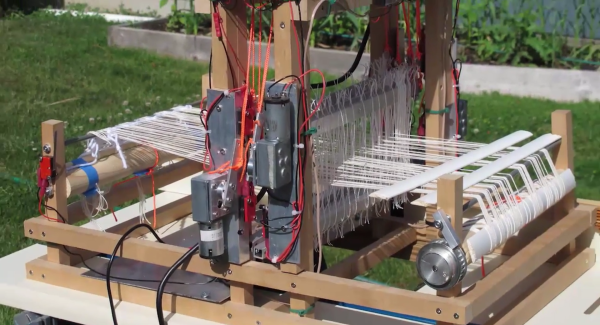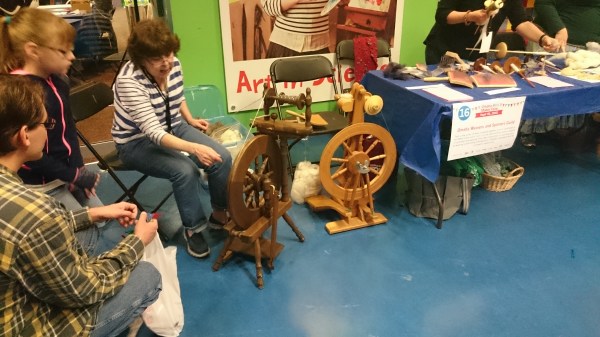When the hackspace where this is being written created their textile room, a member who had previously been known only for her other work unexpectedly revealed herself to be a weaver, and offered the loan of a table-top loom. When set up, it provided an introduction to the art of weaving for the members of all different interests and backgrounds, and many of them have been found laying down a few lines of weft. It’s a simple yet compelling piece of making which captivates even people who might never have considered themselves interested in textiles.
If you are not lucky enough to have a friendly hackspace member with a spare loom when you wish to try your hand at weaving, you may be interested in this Thingiverse project, a 3D printable rigid heddle loom. It’s not the most complex of looms, the heddle is the part that lifts the warp threads up and down, and it being the rigid variety means that this loom can’t do some of the really fancy tricks you’ll see on other types of loom. But it’s a functional loom that will allow you to try your hand at weaving for the expenditure of not a lot of money, some 3D printer filament, and some PVC pipe. If your hackspace or bench has an area devoted to textiles, it may find a place.
We’ve shown you a few looms on these pages over the years, but mostly of the more mechanised variety. A Raspberry Pi automated loom for example, or a CNC Jacquard loom.
Thanks to our Shenzhen contributor-at-large, [Naomi Wu] for the tip.


















